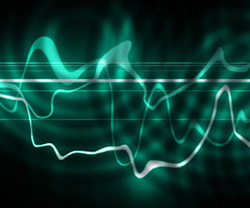Editor’s Note: Following are excerpts from the classic reference book “Audio Systems Design and Installation” by long-time AES member Philip Giddings, which is now back in print and available online from Post Toronto Books.
Guidelines for Minimizing and Controlling EMI
This section discusses the practical techniques which can be used to control noise inputs into audio systems. From a wiring standpoint, the best approach to take in building any audio system or installation is to assume that all the techniques listed below should be done on a regular basis to prevent EMI (electromagnetic interference).
Most techniques are good practice and require little extra materials or time once they become part of the everyday routine. If these practices are followed routinely, then problems which do occur in the early stages of operation will be the result of some other shortcoming.
Eliminating the wiring and installation techniques as a source for concern greatly simplifies the troubleshooting process. Proper wiring and installation also increases the average time between EMI problems and subsequent service calls and unhappy users and owners.
With Regard to Cable Shields:
1. When terminating shielded cable always keep the unshielded portion as short as possible (normally this is less than 1 inch [25 mm]).
2. Never terminate the shield of a balanced audio line at both ends. This book recommends connecting the shield at the source (equipment output) end of the line.
3. Always terminate the insulated (floating) end of a shielded cable with an insulating sleeve over the jacket end. This ensures it cannot become inadvertently grounded (to the connector shell or another cable, for example).
4. Terminate the grounded end of a shielded cable with an insulating sleeve over the jacket termination and a piece of tubing over the drain (shield) wire. This is to prevent the possibility of the shield becoming inadvertently shorted to another circuit, shield, or ground, such as the connector shell. This is very important in multipin connectors.
5. The shield must be completely insulated and not become grounded or shorted to another cable shield (except where it is intentionally grounded at one end) as ground loops will be created.
6. In the case of very long cables (over 1000 ft [300 m]) and/or high EMI areas it may be desirable to break the shield and ground the two pieces separately. This is to reduce the length of shield. Consult the audio system designer if this has not been specified.
7. An alternative to item 6, where a cable shield is long, is to ground one end normally and use ceramic disk capacitors to ground the other end. This provides high-frequency grounding without introducing a DC ground loop. In areas of extreme EMI levels this technique can also be used regardless of cable length. (See Section 12.3.6.)
8. Avoid or minimize unnecessary breaks in shields, such as at junction boxes, and always maintain shield continuity and isolation from ground, through all boxes or multipin connectors, unless system design documentation states otherwise.
9. Use shielded cable on digital control or data lines to contain signals as well as shield from them.
10. Use shielded cables which have a continuous conductive path around the circumference. This is not the case in some cheaper cables in which the foil wraps around the cable and lays the Mylar insulation against the aluminum foil. Generally a fold in the foil is needed to ensure conduction at the overlap. Also, the drain wire should lie against the foil side of the shield, making electrical contact.
11. Multiconductor, shielded, twisted-pair cable should have individual insulated shields and drain wires for each shield.















